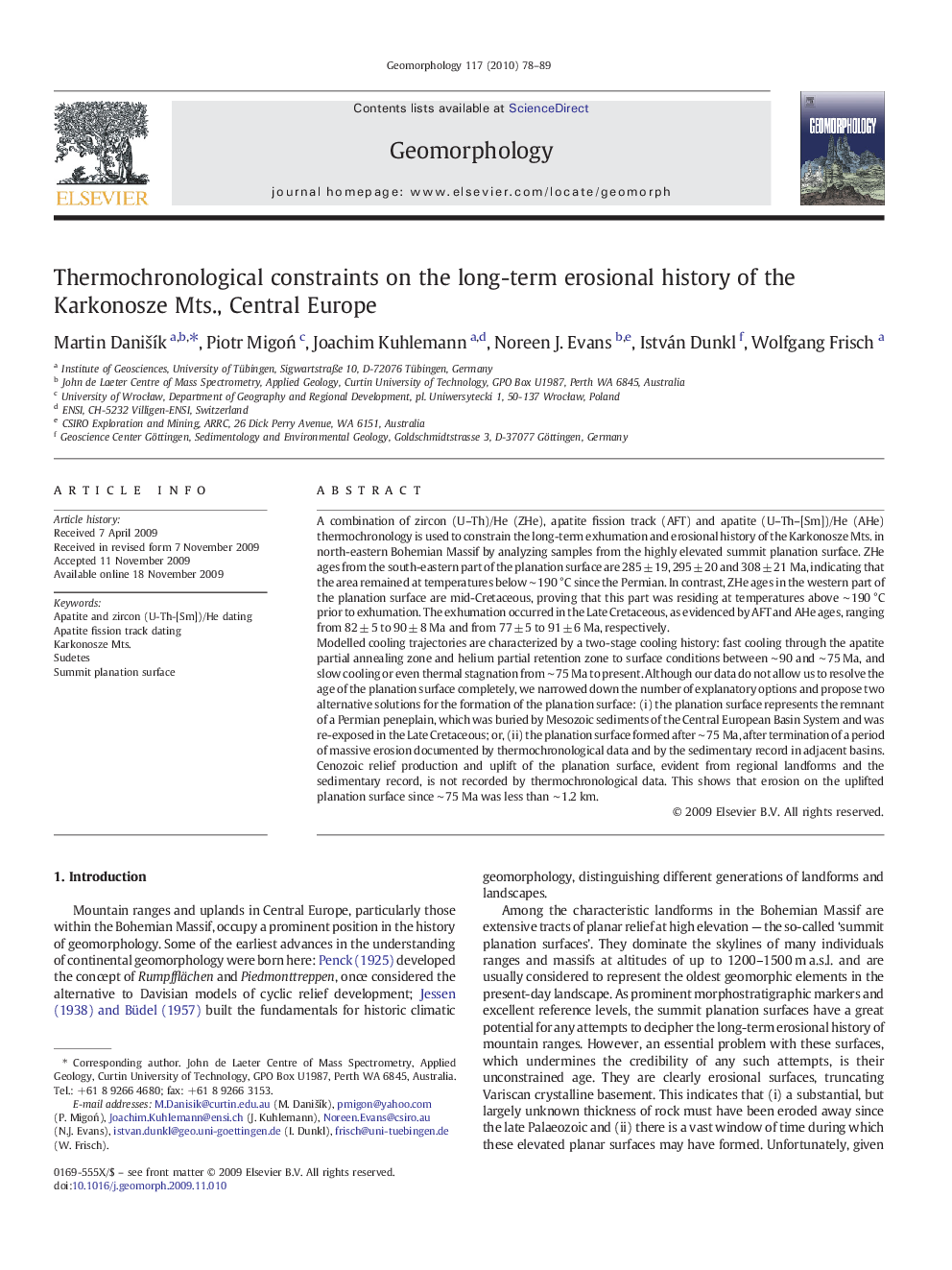| کد مقاله | کد نشریه | سال انتشار | مقاله انگلیسی | نسخه تمام متن |
|---|---|---|---|---|
| 4685939 | 1635525 | 2010 | 12 صفحه PDF | دانلود رایگان |

A combination of zircon (U–Th)/He (ZHe), apatite fission track (AFT) and apatite (U–Th–[Sm])/He (AHe) thermochronology is used to constrain the long-term exhumation and erosional history of the Karkonosze Mts. in north-eastern Bohemian Massif by analyzing samples from the highly elevated summit planation surface. ZHe ages from the south-eastern part of the planation surface are 285 ± 19, 295 ± 20 and 308 ± 21 Ma, indicating that the area remained at temperatures below ∼ 190 °C since the Permian. In contrast, ZHe ages in the western part of the planation surface are mid-Cretaceous, proving that this part was residing at temperatures above ∼ 190 °C prior to exhumation. The exhumation occurred in the Late Cretaceous, as evidenced by AFT and AHe ages, ranging from 82 ± 5 to 90 ± 8 Ma and from 77 ± 5 to 91 ± 6 Ma, respectively.Modelled cooling trajectories are characterized by a two-stage cooling history: fast cooling through the apatite partial annealing zone and helium partial retention zone to surface conditions between ∼ 90 and ∼ 75 Ma, and slow cooling or even thermal stagnation from ∼ 75 Ma to present. Although our data do not allow us to resolve the age of the planation surface completely, we narrowed down the number of explanatory options and propose two alternative solutions for the formation of the planation surface: (i) the planation surface represents the remnant of a Permian peneplain, which was buried by Mesozoic sediments of the Central European Basin System and was re-exposed in the Late Cretaceous; or, (ii) the planation surface formed after ∼ 75 Ma, after termination of a period of massive erosion documented by thermochronological data and by the sedimentary record in adjacent basins. Cenozoic relief production and uplift of the planation surface, evident from regional landforms and the sedimentary record, is not recorded by thermochronological data. This shows that erosion on the uplifted planation surface since ∼ 75 Ma was less than ∼ 1.2 km.
Journal: Geomorphology - Volume 117, Issues 1–2, 15 April 2010, Pages 78–89